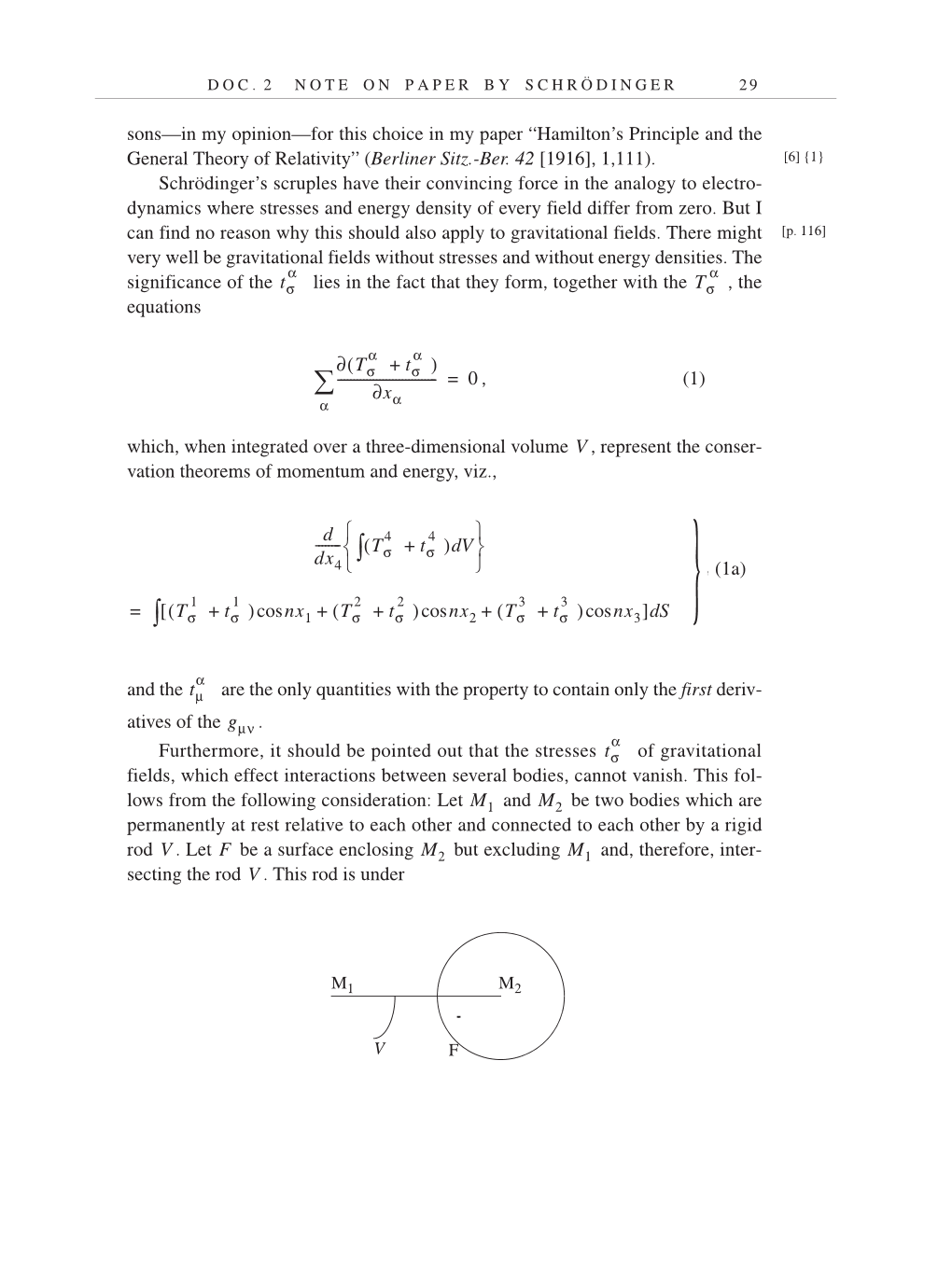D O C . 2 N O T E O N P A P E R B Y S C H R Ö D I N G E R 2 9
sons—in my opinion—for this choice in my paper “Hamilton’s Principle and the
General Theory of Relativity” (Berliner Sitz.-Ber. 42 [1916], 1,111).
Schrödinger’s scruples have their convincing force in the analogy to electro-
dynamics where stresses and energy density of every field differ from zero. But I
can find no reason why this should also apply to gravitational fields. There might
very well be gravitational fields without stresses and without energy densities. The
significance of the lies in the fact that they form, together with the , the
equations
, (1)
which, when integrated over a three-dimensional volume , represent the conser-
vation theorems of momentum and energy, viz.,
(1a)
,
and the are the only quantities with the property to contain only the first deriv-
atives of the .
Furthermore, it should be pointed out that the stresses of gravitational
fields, which effect interactions between several bodies, cannot vanish. This fol-
lows from the following consideration: Let and be two bodies which are
permanently at rest relative to each other and connected to each other by a rigid
rod . Let be a surface enclosing but excluding and, therefore, inter-
secting the rod . This rod is under
[6] {1}
[p. 116]
tσ
α
Tσ
α
∂( Tσ
α
tσ
α
+ )
∂xα
-
α
∑------------------------------
0 =
V
d-⎨
dx4⎩
-------
Tσ
4
tσ
4
+ )dV
∫(
⎭
⎬
⎧ ⎫
Tσ
1
tσ
1
+ ( )cosnx1 Tσ
2
tσ
2
+ ( )cosnx2 Tσ
3
tσ
3
+ ( )cosnx3]dS + +
∫[
=
tμ
α
gμν
tσ
α
M1 M2
V F M2 M1
V
F
M2 M1
V
